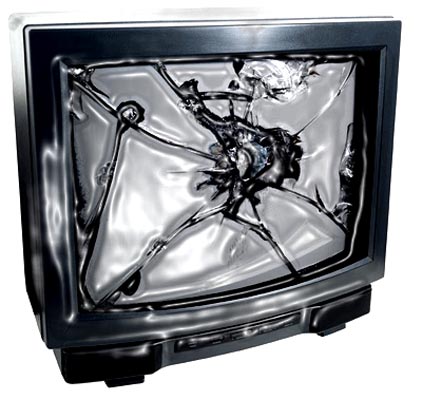Don’t Kill Your TV – Recycle It
Santa Barbara County Public Works Encourages Responsible Disposal of Old Televisions on Eve of Switch to Digital Only Broadcasting

In anticipation of the countrywide switch to digital-only broadcasting (a move that was slated for February 17, but got pushed back to June this week by Congress), more and more Americans are throwing away their old televisions and upgrading to digital-compatible sets. Here in Santa Barbara, the Santa Barbara County Waste Reduction Program (see lessismore.org) is encouraging people to recycle their dated sets instead of simply dropping them in the trash.
In the state of California, televisions and other electronics are considered hazardous waste – they contain potentially unsafe chemicals such as lead and mercury-and it is not only dangerous but also illegal to include them in regular garbage. For this reason, the S.B. County Public Works Department – which sponsors the Waste Reduction Program – is making it easy to safely and quickly dispose of old televisions and other electronics. On the South Coast, residents can drop off their electronic devices at no charge at the South Coast Recycling and Transfer Station at 4430 Calle Real in Santa Barbara. In the Santa Ynez Valley, electronics are collected at the Santa Ynez Valley Recycling and Transfer Station at 4004 Foxen Canyon Road.
Recycling TVs and other devices, in addition to preventing possible pollution, also ensures that valuable materials in old electronics are reused in new products. Past recycling efforts have been so successful – in 2008, for instance, the county collected more than 850,000 pounds of electronics – that many electronic manufacturers, who reuse the valuable materials, are now beginning their own collection and recycling programs.
The Public Works Department also encourages consumers to buy new TVs that are energy efficient and are made by manufacturers who offer recycling or disposal services. This type of system, referred to as “product stewardship” or “extended producer responsibility,” helps to spread the costs of collection and recycling and encourage more efficient design. It also motivates manufacturers to use less toxic materials in their products to avoid the high costs of managing hazardous waste.
For more information about hazardous and electronic waste, including additional collection sites locally, visit lessismore.org. For details about the switch to digital broadcast in June, visit dtv.gov. And for more information about product stewardship, visit the California Product Stewardship Council’s website at calpsc.org.



